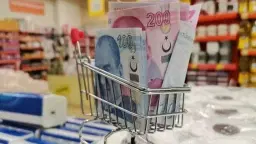With its production structure driven by external demand, the output of the automotive sector decreased inevitably.
Japan’s exports in the first ten months of the year decreased by 2.3 percent compared to the same period in 2011. Experts raised two main reasons: first was the relative drop in Europe’s import demand due to the challenging economic circumstances. Second was the relative slowdown in China’s growth as well as the escalating tension between Japan and China. In October, Japan’s exports to the Eurozone and to China decreased by 20.1 percent and 11.6 percent, respectively.
As Japanese economy relies heavily on exports, the weakening of export performance impacted the economy entirely. Japanese economy contracted in 2011 and is expected to grow sluggishly by 2.2 percent in 2012. Growth prospects for 2013, however, are less favorable: growth rate is expected to half in 2013.
Weak export growth
Normally, high trade volume augurs good for the economy. Things change in times when countries that are important for the world economy are in trouble, however. Troubled countries lower their import demand overall and their problem becomes to be problem for the exporter country even if it has a solid economy. Export-led sectors in particular first stagnate and then shrink. This has a contagion effect on sectors that produce inputs for the export sectors, affecting the entire economy. Next, the exporter country starts to contribute to the transmission of negative impacts to other countries.
Turkey went through all this from the late 2008 throughout 2009. Exports shrank by 22.6 percent and the economy contracted by 4.8 percent. Today Turkey again has problems about export performance though not as severe as they were in 2009. Non-gold exports in 2011 totaled $133.3 billion. However, as of September, twelve-month export volume equaled $136.7 billion, with a slight increase of 2.6 percent. Yes, it is better than nothing but it is weak.
High current account deficit
It is well known that the crisis in Europe is the underlying reason for the weak export performance, evident from the latest developments in the automotive sector: automobile exports decreased year-on-year by 9.9 percent compared to the first ten months of 2012. With its production structure driven by external demand, the output of the sector decreased inevitably. In the end, production figures for the sector also dropped by 10.4 percent. More interesting was that the drops in export and production in October was severer than average drops in the first nine months of the year.
Turkey’s current account deficit is still high though it was considerably lowered lately. The current level would have been alarming if the current era was not marked with central banks of developed countries injecting large amounts of liquidity and keeping interest rates at low levels, that is, when financing deficit is quite easy. Furthermore, it would be possible to ease the current account deficit by cooling down the economy. Sluggish growth outlook of developed countries that affect our export performance will not disappear in the short term. We have to ponder on the steps Turkey can take to tackle the current account deficit, which floats around 7-7.5 percent of the GDP despite weak growth at 3 percent.
This commentary was published in Radikal daily on 22.11.2012





